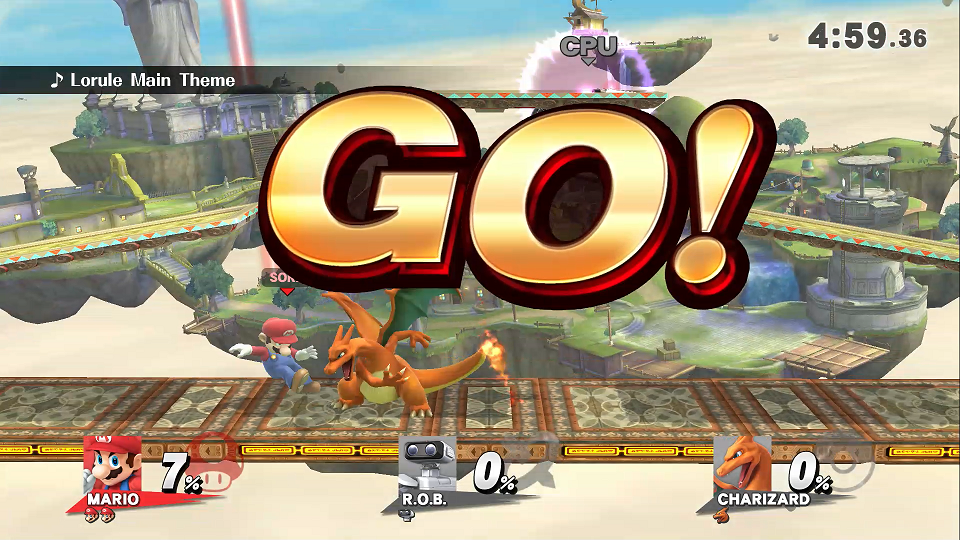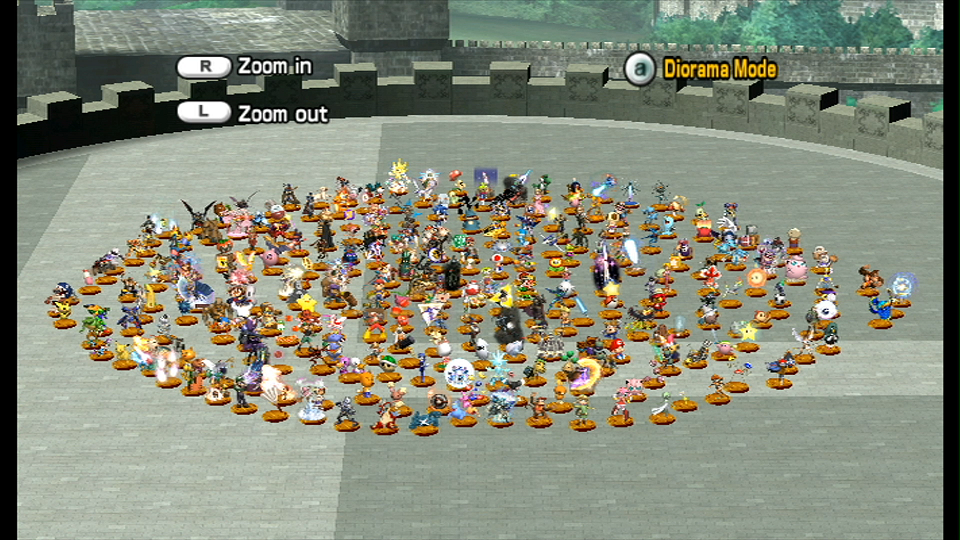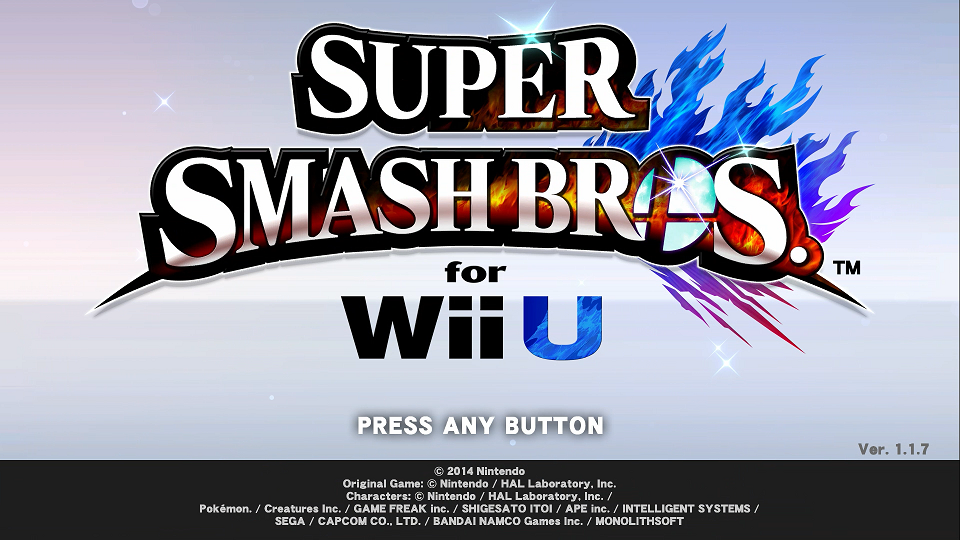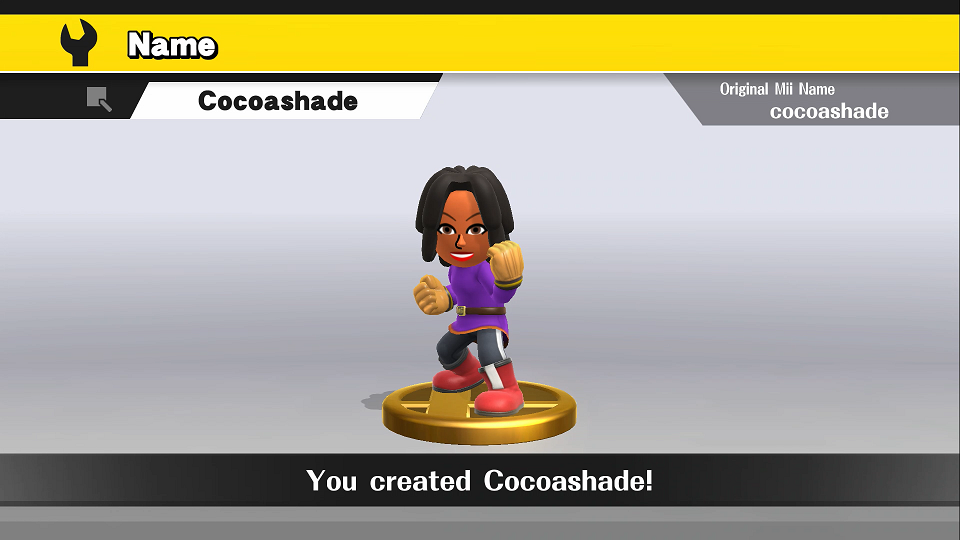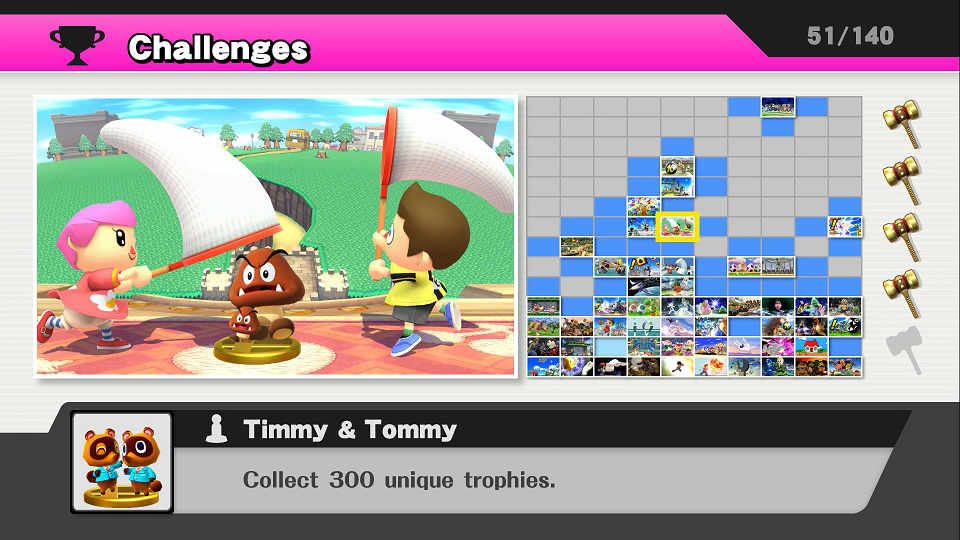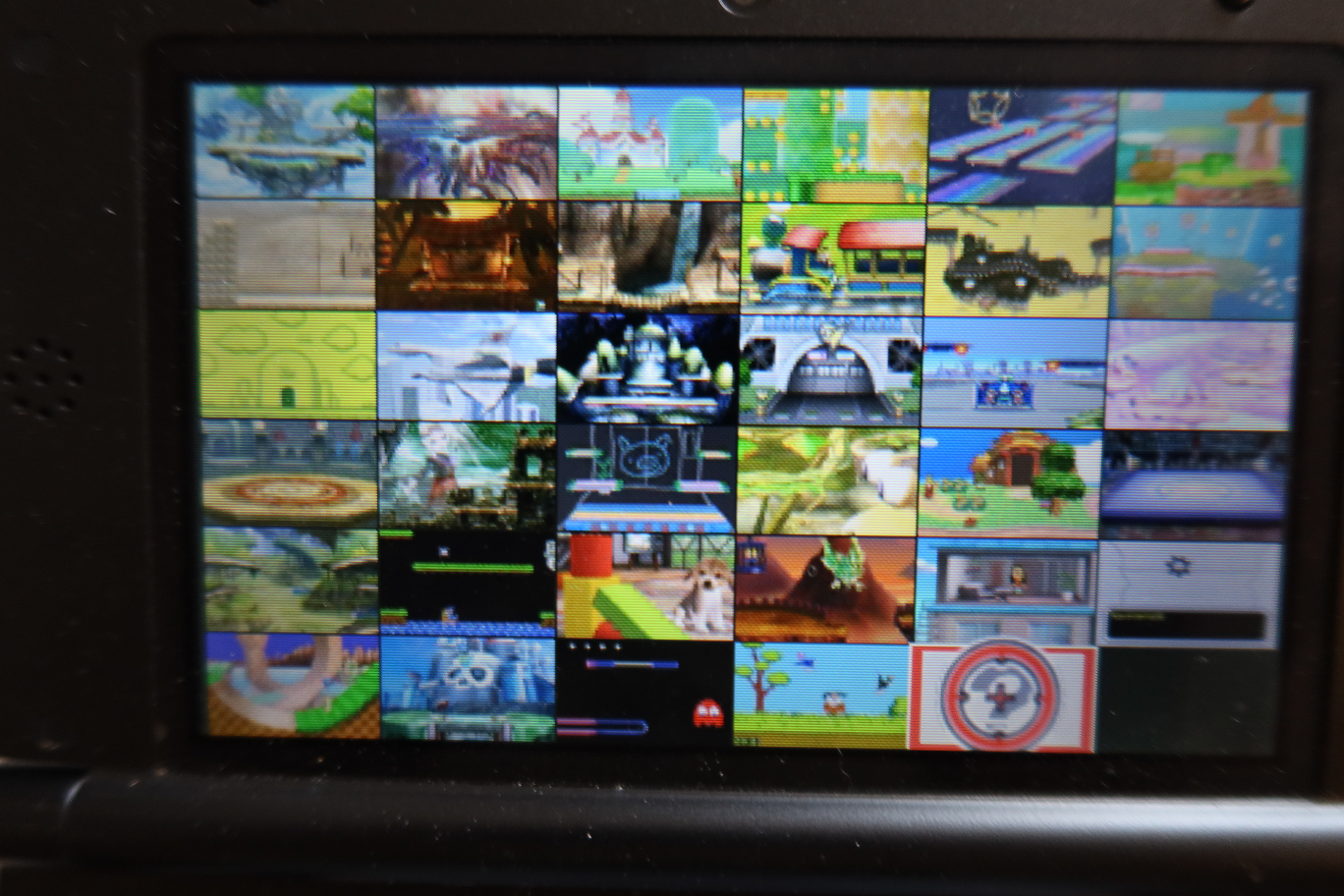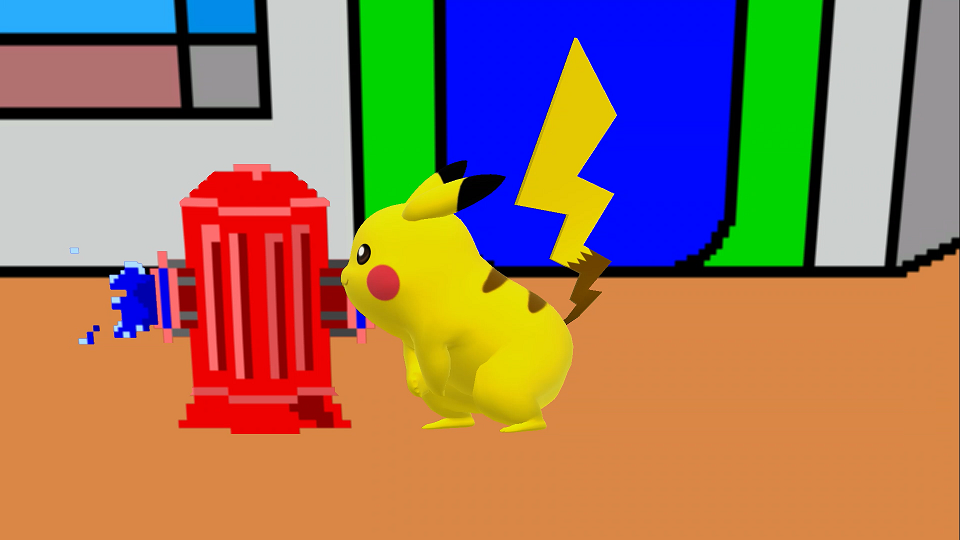Video Game Blog 050: Smash Binge Part 2
Hey, we made it 50 posts in the Video Game section! This time I’m happy to present the continuation of my journey through every game in the Super Smash Bros series. Last time I talked about the first three games, although I barely touched on the third. You can find a link to that installment below:
Video Game Blog 036: Smash Binge Part 1
This time around I have finished the third and fourth games, and started playing the 3DS version. We’ll talk about those three now. As with before, I’m mainly talking about single player mode. Each Smash game supports multiplayer, but I’m mostly a solitary gamer.
Charizard beats up Mario. (Credit: Nintendo)
Before I get started, like last time I want to point out that I am not a professional (or even good) Smash player. I know there are many people who take the various Smash games very seriously and some manage to play it for a living. I’m not there, I never will be, and I’m not going to pretend I’m good at this game. I’m an extremely casual player. If I have trouble in a game mode I will absolutely lower the difficulty without embarrassment. There are many Challenges I cannot complete and likely never will. I have not maxed out an Amiibo and trained against it. I have a certain level of skill and know I won’t be going above that level. Anyway, just go into this post knowing that I’m strictly playing for fun and the enjoyment of unlocking things and beating up colorful sprites.
Brawl. (Credit: Nintendo)
Super Smash Bros Brawl. We’re going to start here, even though I covered it a bit in the previous post. I had just started playing when I put that post out, so I hadn’t made it too far. After the post I logged many more hours into this game, trying to see all it had to offer.
Mainly I focused on the story mode, Subspace Emissary, since that’s the easiest way to unlock all the characters. After I’d completed that (and it’s a massive chunk of the game) I mainly worked on winning Classic and All-Star as each character, since that’s my main concept of how to complete a Smash game. Both modes net you an exclusive character trophy. Playing through these modes over and over with each character is kind of tedious, so to break it up, I would explore the other game modes. Some nights I would just work my way through Target Smash or do some Events.
For two nights straight all I did was play Brawl mode with a non-existent second player to complete Challenges. This netted me some new songs, stages, and trophies. (See, several of the Challenges involve playing Brawls on certain stages or with certain characters.) I didn’t bother getting a screenshot for Challenges, since that screen scrolls and there was a lot of it that I didn’t complete. Some of the Challenges are pretty ridiculous for a player of a low skill level like me. But I did all of them that I could because I like completing things.
Brawl Roster. (Credit: Nintendo)
Speaking of completing things, a Smash game wouldn’t feel complete without unlocking all the characters. This was an easier task this time around, since they all unlock during story mode. As mentioned before, this game has 39 characters.
Brawl Events. (Credit: Nintendo)
So now let’s talk about the different game modes. As mentioned, a huge chunk of my play consisted of working my way through Subspace Emissary. The cut scenes were pretty good, and the story was simple but the mechanic of finding and rescuing the fighters to add to your roster was great. I liked the aspect of exploration and puzzle solving thrown in with the battles. They had a mechanic where you could make trophies out of the enemies, but it’s randomized if you get the correct item at the moment you’re near an enemy you haven’t made into a trophy yet, so there are plenty of those I didn’t get. There is also an indicator on each stage once you’ve found all the treasures in the stage.
The Events are a series of 41 battles with specific terms and rules. I was able to get through them all, although some were on Easy mode. (I was not able to complete all the Events on Melee, but I may go back to that one some day and try again.)
As for the other game modes, I only played Brawl (the PvP mode) for the Challenges. Target Smash was okay, but pretty tedious going through it with every character. I never bothered doing Classic mode above Normal difficulty, so I only have the first three levels of Target Smash unlocked. Home Run Contest was annoying to me. It took me way too long to get the hang of it. (In this mode you hit a punching bag just right with the baseball bat and see how far it flies. The more damage, the farther it goes.)
Multi-Man Brawl wasn’t as fun as the one in Melee. This game has it split into six different versions changing up the number of opponents, time, and difficulty. There is a endless survival mode to see how long you can last and a brutal option called Cruel Mode. I couldn’t even knock out one opponent in Cruel.
Boss Battle mode is one I didn’t try too much. It’s a rematch of all the mini bosses from Subspace Emissary. Aside from all those modes, there are also demos of old Nintendo games to unlock, a stage builder mode, a coin launcher game for more trophies and stickers, a sticker album… all sorts of stuff.
Wait, is that a blue Sonichu? (Credit: Nintendo)
Thoughts: There was really a lot of content packed into this game. Every time I thought I’d seen all the game had to offer, something new would pop up. I’d unlock a new stage, find a new assist, do a new finishing move. There are so many different game modes and unlockables. Subspace Emissary was a very lengthy, fun mode. At times frustrating, but lots of fun. The story mode and the other multiple game modes and sheer amount of unlockable content makes this a very full, varied game.
Favorite Characters: This didn’t change much from last post. I still preferred DK and Pokémon Trainer. But I also had a lot of fun with ROB, once I’d unlocked him.
Least Favorite Characters: Still Ness and Lucas. I was unable to pull off their fall recovery moves and they just didn’t seem as powerful to me.
Brawl trophies. (Credit: Nintendo)
Game Completion: Just like with Melee, I considered the game “done” once I’d completed Classic and All-Stars with every character. Above are the total trophies I accumulated over the course of the game. I got 390 trophies out of a total of 544. Which is honestly pretty good.
Smash for Wii U. (Credit: Nintendo)
Super Smash Bros for Wii U was released in 2014 for the Wii U. If you recall my previous post, I mentioned that I had sold my copy of this game after buying the 3DS version and learning they’re essentially the same game. Well, I managed to find a new copy for cheap in my local retro game store, so I snatched it up. And I’m very glad I did. I mainly got it for the ease of getting screenshots (and because my 3DS was going out at the time… more on that later) but then I learned that there are some differences between the versions that made it worth it to me to play both.
Something very odd did happen when I first booted this game up, though. See, I had never played this game before. My Wii U had no save data from it. And yet somehow all the characters were unlocked and most of the Events were completed, along with several Challenges. I also had 27 trophies and 13,318 gold. Baffling. I couldn’t find anything online about why this might have happened, so I eventually chalked it up to a glitch and deleted the save data to ensure I could start over from scratch. Most of the fun of these games is in unlocking characters and completing the various modes.
Ooooo! (Credit: Nintendo)
While this game adds some things to the series, it also took a few things away. You no longer collect stickers or music CDs in stages. There is no Adventure or Story mode of any sort. That said, many other staple features are here, such as Multiman Smash, Homerun Contest, and All-Star mode. There is a new minigame in the form of Target Blast, where you smash bombs across a stage to break blocks, Angry Birds-style. I was terrible at this.
This game also includes some Amiibo support. As you may have noticed, the trophies in these games look an awful lot like Amiibos, so it makes sense they’d have compatibility. The functionality is somewhat limited, though. Basically you scan your Amiibo in (only characters who appear in the game as fighters) and you can teach them custom moves and battle with them in Smash mode. They’re computer-controlled and level up during battle, up to level 50. You can then spar with them to improve your own skills in the game. I messed with this feature a little with my Gold Mario Amiibo, but I got bored with it pretty quick.
Still, I had accumulated several Amiibos over the years, both ones I bought and from my brothers, so I messed around with them a bit. I have Pikachu, Charizard, Donkey Kong, Bowser, Link, Yoshi, and a Gold Mario. It’s always nice to get some use out of them. I feel like Nintendo has been pretty lazy with their Amiibo support. They could have done so much more with them. (Animal Crossing New Horizons is a game that is a great example of how to utilize Amiibos in gameplay.)
Wii U roster. (Credit: Nintendo)
This edition has 58 playable characters, plus 7 characters available from DLC.
As always there are new franchises represented: Animal Crossing, Duck Hunt, Punch Out, Wii Fit, Xenoblade Chronicles, and Pac Man. There are a few characters left out from the previous game: Pokémon Trainer, Ice Climbers, Wolf, and Snake. Lucas is only available as DLC. Zelda and Sheik are now separate characters. Also separated out is Samus’s Zero Suit version, which appeared in Brawl as an optional transformation. And now Charizard battles without a Trainer.
An interesting feature is that alternate character designs can now be completely different characters. See, in all the Smash games as you select your character you can toggle between different color schemes to differentiate your character. You can choose the gender and appearance of your Villager in that way. In this game, if you toggle Bowser Junior, you can select one of the seven Koopalings from Super Mario Bros 3. Olimar can become Alph, Robin and the Wii Fit Trainer can be gender-swapped, and Little Mac can be switched with his wire-frame arcade version. I found this an interesting use of the alternate costumes, allowing for even more characters to be included in the game without officially adding them to the roster.
As mentioned above, this is also the first Smash game to include DLC. There were 7 DLC characters available for purchase, with a stage for each. Due to the closure of the Nintendo Wii U eShop, it is now impossible to get these characters and they can be considered lost content for anyone who didn’t already purchase them. The DLC included characters from previous games, like Mewtwo and Lucas, as well as characters from franchises new to Smash like Street Fighter, Final Fantasy, and Bayonetta.
Wii U stages. (Credit: Nintendo)
There are a total of 46 stages. Double that number if you count the Omega versions. (This removes the hazards and makes the stage like the Final Destination where you fight the Hand bosses.) There are nine DLC stages. There is also a stage customization menu option where you can create your own stages and save them for play later.
I unlocked 45 stages, so I was still missing one somewhere. Probably one of the Challenges I didn’t complete.
The stage designs, in general, contain more movement and hazards than in Brawl. There are several stages that move from one location to another. Many of them have enemies moving around or changes that happen periodically as you battle. At times it felt like you were fighting the stages as much as your opponents.
All-Star trophies. (Credit: Nintendo)
The trophy system, of course, returns from previous games. You earn trophies by winning on Classic and All-Star as each character, completing events and challenges, participating in various game modes, and in the new Trophy Rush mode. This is a mini game where you pay in-game coins to add time to a clock and break blocks on a tiny stage with a character of your choice. This appears to be a good way to get rarer trophies that your collection is still missing. I wasn’t too good at this, but got a little better with practice.
Trophy shopping. (Credit: Nintendo)
One cool addition is a trophy shop where you can spend your coins on trophies. The selections rotate as you play the game, with trophies being cycled regularly. Some are listed as being on sale, and each selection tells you whether you currently have it or not. This is where I spent the majority of my coins. I really appreciated the ability to spend coins on specific trophies. Over my time of playing Brawl I accumulated tons of coins and all I had to spend them on were Continues in Classic and All-Star. I checked the shop every time I played and it was my preferred method for gaining trophies.
Wild. (Credit: Nintendo)
One big change is the capability to have up to eight fighters on the screen at a time. As you might expect, this can get pretty chaotic. Due to the increased number of characters, the action is a bit more zoomed out to fit more of the characters on stage at once, making the characters smaller. As you would expect, the more characters on the screen, the more chaotic it gets. There were times when I couldn’t even locate my character before the announcer said “Start!”
They also included some customization options. You can earn items and equip them to your customized fighters to raise their stats. I liked this angle… the Dragon Ball fighting games I love so much have had customization from the beginning, so it was something I felt was lacking in the Smash series.
Main menu. (Credit: Nintendo)
This game has many gameplay modes. Brawl mode is renamed to Smash mode, but it’s the same PvP with many customization options as always. Considering how big the Smash icon is on the main menu, you can tell the developers considered this the main mode. I’m sure a lot of people do, but like I mentioned before, I don’t play this with other people. I spent most of my time in the tiny Games & More section. This is where all the single player options are
Replacing Story mode is the Smash Tour, which is a Mario Party-esque board game where you move your figures around a board earning fighters, setting traps, gaining power ups, and brawling each other. I tried several of these boards and I really wanted to like it, but I could not get the hang of this mode. It was all too chaotic and confusing for me. There was way too much to keep track of and it felt like a slog.
There was a game mode that I didn’t do much with called Special Orders These are split into Master Orders and Crazy Orders and involve using tickets (either purchased or earned in Classic Mode) to complete tasks of varying difficulties for rewards. In Master Orders there were often specific items or conditions in play during the stage. In Crazy Orders you get the choice to keep playing for more rewards (and risk losing it all) or switch to the boss battle against the Hands. The more stages you complete, the more chances they have of dropping treasure. I found these interesting but not compelling enough to keep attempting them. I mainly just did them here and there to break up the monotony of the main modes.
Classic Mode plays differently from the previous games. Instead of waves of fighters, it takes place on a small game board arena where you move your trophies towards the group of fighters you want to fight. You can see if some of them will award you with coins, trophies, or items. Other groups are eliminated as you fight, new fighters come in, and eventually you’re warped to the final battle with Master Hand (with some new tricks). A good thing about this mode is that your stock of lives refills after every battle. This was nice, as I went through so many continues in previous games trying to get through Classic mode.
All-Star Mode was also somewhat changed. Rather than being separated by franchise like the previous one, this time around it’s in reverse release date, working back to the NES release games and early arcade games. What I found the most challenging (and frustrating) is that you cannot continue in this mode as you could in previous games. That combined with increasingly difficult fighters, low number of healing items between battles, and the hazardous cramped stages, I lost many attempts which slowed down my progress quite a bit in this aspect of the game.
Hey, I know her! (Credit: Nintendo)
One of the great new options in this game is allowing you to create characters based on your saved Mii avatars. There are three classes: Fighter, Brawler, and Gunner. Interestingly enough, each class counts as individual characters in the roster, each getting their own unique finishing move and their own trophies in Classic and All-Stars. (Which is why I included them in the character count above.) Naturally, I created one for my beloved wife Cocoashade. And I made her a badass brawler.
Uh oh. (Credit: Nintendo)
As you would expect, I created one for me too. And I gave him a sword. And a KK Slider hat. Of course I had to have our characters face off in Smash mode.
SMASHED! (Credit: Nintendo)
And here’s Cocoashade kicking SoraRabbit in the gut. Wheee!
Really, she was one of my best characters once I customized her. I ended up using her for the harder Event matches and the Multiman Smash mode.
Wii U Events. (Credit: Nintendo)
This time the Events were arranged in an occasionally branching pathway. By completing an additional challenge in some of them, extra rewards and new paths could open up. I liked the improvements on this mode and managed to complete all the Events.
Wii U Challenges. (Credit: Nintendo)
For Challenges I was able to include a screenshot this time, as it was arranged in a non-scrolling grid. I completed 51 out of 140.
Are we floating over Buntown? (Credit: Nintendo)
Thoughts: Even with the lack of a Story mode, this game was packed full of content. The graphics and gameplay were improved, the addition of the store and the Mii characters were fantastic. This one went surprisingly fast for me and I finished it long before I thought I would. I liked the Amiibo support, although I didn’t get much use out of it. Firmly in the negative column is the DLC. I feel it was unnecessary, and it’s sad that I don’t have the option to access these characters anymore. (I didn’t mind too much, though, since I‘d already decided to buy all the DLC for Smash Ultimate.) The music is hype. The graphics are better and smoother than in Brawl, which was already a huge step up for the franchise. I really liked the selection of characters this time around. The glitch when I started playing is still really confusing to me.
Favorite Characters: I had a few this time around. Lucario was one of the front runners for me. I did pretty well with the sword guys— Link and the Dragon Emblem fighters. But my absolute favorites were my Mii sword guy with his KK Slider hat and my brawler Cocoa. On all the events where I had a choice of characters as well as the Multiman Smash I always chose her.
Least Favorite Characters: I had a hell of a time winning All-Star mode with Ness… even though he’s strong with his bat, I could never master his recovery move. (He shoots lightning at his own butt to lift him up. No, seriously.) Villager and Olimar gave me a lot of trouble too. Although I like Wii Fit Trainer, her yoga moves make it a bit tough to reliably hit opponents unless you aim just right. She takes a lot of practice.
Wii U trophies. (Credit: Nintendo)
Game Completion: For trophies I collected 469 (out of a total 743). Pretty impressive for less than 3 and a half months of play.
Oh, I also managed to unlock Mew in the Pokéball just before I wrapped up my play. This is a very rare occurrence in these games, and this is the first one I managed it on.
Smash 3DS. (Credit: Nintendo)
Super Smash Bros for 3DS was released in 2014 for the Nintendo 3DS. Like I mentioned before, in many ways these games are identical. But there are some differences, and that’s what I will focus on for this section.
I didn’t think I would get much playtime in on this before this post, because my 3DS started to go out on me. The battery was already worn out from the hours upon hours of Pokémon and Animal Crossing New Leaf I logged into the system over the past five years. But around the time I got this game I started to notice my controls were failing too. My analog stick was not working well, and my A button was mostly unresponsive. Thankfully I was able to find a good repair shop in town and got my 3DS patched up so I was able to play a bit. I unlocked most of the characters and got through Classic mode a few times so I could at least have the feel for the game to write about it.
I’m going to apologize now for the quality of the pictures to follow. As I’ve complained about repeatedly, it’s very difficult to get actual screenshots from handheld devices, so I used my camera to varying degrees of success. They may not be good, but they’ll do for this brief section.
3DS characters. (Credit: Nintendo)
The characters in this version are the same, however many of them have to be unlocked by various means that differ from the Wii U version. As you may see above, I actually have Mewtwo, meaning that I purchased that DLC character prior to the eShop closing down. I don’t recall doing that, but it seems like something I would do. Mewtwo is awesome.
3DS stages. (Credit: Nintendo)
In the 3DS version there’s a total of 42 stages available, 8 of which are from DLC. I currently have 34, one of which is from the Mewtwo DLC, so I’m missing one available stage. The stages in the 3DS version are based off of handheld games, where the Wii U stages were focused more on console games.
Classic mode. (Credit: Nintendo)
While the two versions are very similar and are technically considered the same game (collectively Smash Part 4) there are differences between the two. Smash Tour is not in the 3DS version and is replaced with a game mode called Smash Run. This mode involves battling characters over a five minute time limit to collect powerups to use in a final battle. There was also a mode called Street Smash, but as this uses StreetPass, it can no longer be accessed now that the Nintendo 3DS servers are offline.
The trophies that can be collected are also different, these continuing the focus on handheld games. There is two screen functionality including displaying things on the bottom screen and allowing you to tap a character icon to center the top screen on them.
A huge difference is in how the Classic mode plays. Rather than being a board game set up, you run along a track, choosing branching paths. The paths are color coded by difficulty and give different numbers of coins for travelling along them. Even at a much higher Intensity rating, I didn’t find these battles too difficult and you even have the chance to choose to battle just Master Hand rather than Master and Crazy by choosing the appropriate path. I had to beat Intensity 6.0 to unlock Bowser Junior and managed to do it in two attempts.
3DS Challenges. (Credit: Nintendo)
At first I thought the Challenges were really weak compared to previous games. There were 35 of them listed and they seemed super easy. But then I learned that there are actually 3 pages of Challenges, and they get increasingly more difficult. You have to complete a full set of 35 to gain access to the next set, making for a total of 105. Some of them are not accessible anymore due to that pesky eShop shut down making StreetPass unusable. Lame. Anyway, I completed 30 out of 105 Challenges. I’m locked out of Page 2 forever thanks to Nintendo’s short-sightedness.
Mewtwo vs Sonic… to the DEATH. (Credit: Nintendo)
Thoughts: The graphics and sound on this are surprisingly good for a handheld game. I didn’t like the controls as much. They feel a little more awkward on the 3DS system. Plus I’m paranoid I’ll wreck my controls if I play this one too much. My 3DS came back from the dead once… I don’t want to risk a second time. This game is a battery drain, so even with my brand new battery, I wouldn’t be able to have long sessions like I do on console. (It was unplayable with my old battery without being plugged in.) As for the positives, I like the focus on handheld games where the Wii U version was centered around console and arcade. I think that’s clever. I also like this version of the Classic mode. It adds some strategy in the branching paths and you can choose your own difficulty as you progress.
Favorite Characters: This one isn’t much different from the Wii U version, but I think Mewtwo is my favorite out of the characters so far. I’m glad Past SoraRabbit paid for him.
Least Favorite Characters: I would say the same applies here, Ness, Villager, and Olimar. Although I haven’t gotten to my playthroughs for them yet.
3DS trophies. (Credit: Nintendo)
Game Completion: I currently have 126 trophies, which is pretty surprising to me considering how little I’ve played it compared to the other installments. I still have two characters to unlock. I’ve only played Classic mode for 15 characters and All-Stars for none of them. I have not tried Smash Run. I’m not done playing this game by any means, but I will be taking this one casually, playing here and there as I have time and get the urge. I am enjoying it, but I’m still a little paranoid that my 3DS will degrade to an unfixable state some day and I don’t want to exacerbate that.
YAY! (Credit: Nintendo)
So that’s essentially where I’m at in the Super Smash Bros franchise as of this writing! I have so far played through either four or five games, depending on how you look at it. Next up is Super Smash Bros Ultimate, which I have already started as I compiled this post. Since I got lazy and didn’t complete this post months ago as planned, I have already logged many hours into Ultimate and I’ve already started the notes and screenshots for that post. Ultimate will take me quite a bit of time, so don’t expect Part 3 of this series anytime before 2026. Spoiler— it’s a very solid entry and I’m getting a lot of enjoyment out of it.
I leave you with a two panel story about Kirby meeting the Villager.
This is just how Kirby says hi. (Credit: Nintendo)
Cute. I think they’re friends.
We made it to the end! (Credit: Nintendo)
Thank you for joining me again as I deep dive into Super Smash Bros! I’m having so much fun playing this series and wanted to share my thoughts and progress with you all. We’ll let this series of posts rest for now, but I’ll be back eventually with a third edition talking about my further progress on the 3DS game and my adventures playing through Smash Ultimate. And, heck, by then maybe we’ll have Smash 6 on the Switch 2. (Fingers crossed!) Anyway, thank you again for 50 great video game posts, I appreciate you all, and I’ll be back soon with number 51!
No caption necessary. (Credit: Nintendo)


